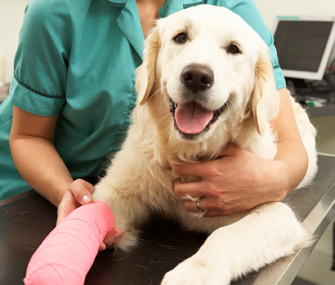Essential Supplies for Your Dog First Aid Kit
Published on February 12, 2016
Skip To

So, what constitutes an emergency? Examples of emergency situations include — but are not limited to — heatstroke, hypothermia, bleeding, difficulty breathing, limb fractures (breaks), snakebites, insect stings or allergic reactions or if your dog has eaten a foreign object or something toxic. In the event of an emergency, immediately call your veterinarian. And remember, when in doubt about whether something is an emergency or not, err on the side of caution.
In some cases your veterinarian might give you guidance regarding treatment. It can be helpful to have a first aid kit at the ready. Assemble a first aid kit — ahead of time, of course — with the following:
-
rectal thermometer and petroleum jelly for lubrication
- scissors
- tweezers
- sterile gauze dressings
- self-adhesive bandage
- instant cold compress
- a bottle of sterile water or sterile saline for flushing wounds or eyes
- antiseptic skin ointment
- hydrogen peroxide
- sterile gauze pads
- pen light
- towel
- first aid instructions
- veterinarian and emergency clinic numbers
Emergencies are scary but if you’re prepared, you can help to provide the best possible outcome for your dog.
More on Vetstreet:





